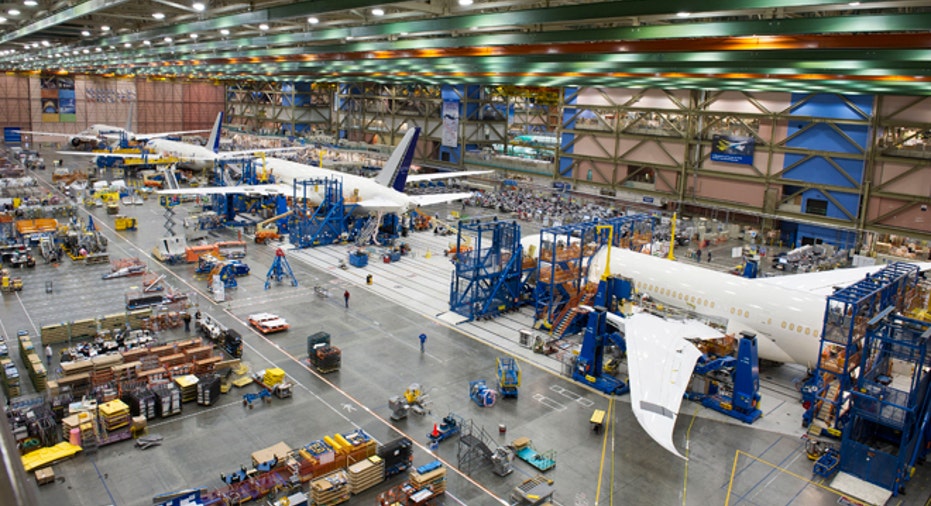Transportation Leads Durable Goods Orders to Record

Orders for long-lasting U.S. manufactured goods posted their biggest gain on record in July on strong international demand for aircraft, but the underlying trend remained consistent with a steady pace of domestic economic growth.
The Commerce Department said on Tuesday durable goods orders, items ranging from toasters to aircraft that are meant to last three years or more, jumped 22.6 percent last month after an upwardly revised 2.7 percent increase in June.
July's increase was the largest on record and far outpaced economists' forecasts for a 7.5 percent advance.
Durable goods orders were previously reported to have gained 0.7 percent in June.
Transportation orders jumped 74.2 percent, the highest increase ever, boosted by a surge in bookings for civilian aircraft, which soared 318 percent, the largest increase since January 2011.
Boeing BA.N reported on its website that it had received 324 orders for aircraft in July, triple the number booked in June.
Many of the orders, including 150 planes by Emirates, were for expensive models, some still under development. It will take at least 10 years for the resulting increase in production to filter through to gross domestic product.
Orders for autos increased 10.2 percent, a sign of firming manufacturing activity, after declining 1.3 percent in June. Excluding the volatile transportation category, durable goods orders fell 0.8 percent after rising 3.0 percent in June.
Non-defense capital goods orders excluding aircraft, a closely watched proxy for business spending plans, slipped 0.5 percent last month. The decline, however, followed an upwardly revised 5.4 percent advance in June. So-called core capital goods orders remained consistent with expectations of a steady economic growth clip in the third quarter.
Core capital goods orders were previously reported to have increased 3.3 percent in June.
Core capital goods shipments increased 1.5 percent in July. Shipments of core capital goods are used to calculate equipment spending in the government's GDP measurement.